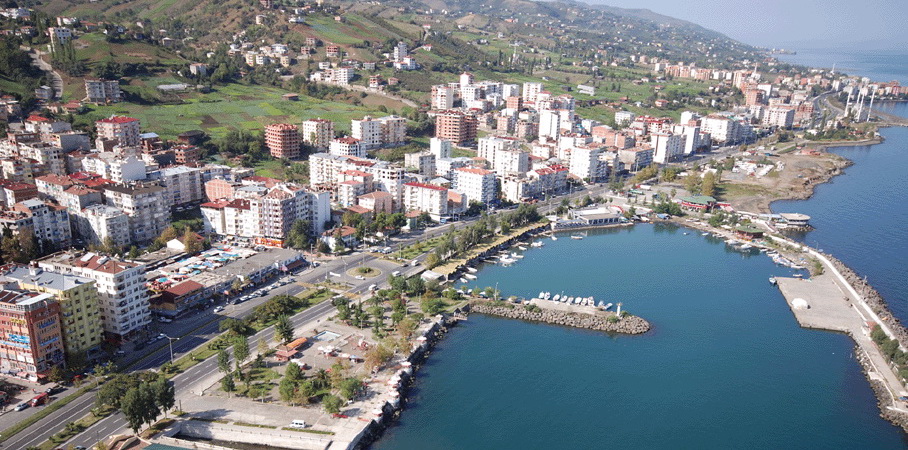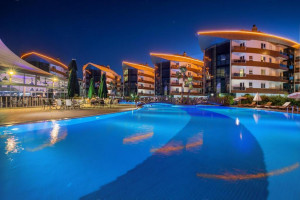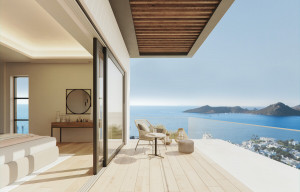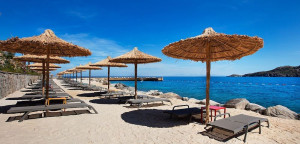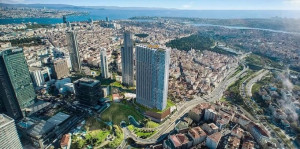Get ready to be enchanted by Trabzon in Turkey. As a principal city of the Karadeniz region, Trabzon excels on all fronts: cultural, historical, and visual and given the once-influential location on the ancient Silk Road between latter-day Europe and Asia, the Venetians, Genoese, Greeks, Ottomans, and Russians frequently visited.
Today, Trabzon city centre is an essential and active destination in Turkey, thanks to economic and commercial trade that flows through its port. Just as notable is the elite status as home to the accomplished football team Trabzon Spor and as the Black Sea birthplace of Ottoman ruler Suleiman the Magnificent.
Trabzon also has many popular destinations, natural wonders, photographic opportunities packed with fascinating heritage, and oceans of greenery that have helped the city acquire the 'cleanest city' tag in Turkey and now draw in tourists looking for healthy retreats.
Additionally, over the last five years, more and more Middle Eastern nationalities have flocked to invest in real estate. So, let's look at the city centre, the surrounding areas and its prominent place in the Black Sea region of Turkey.
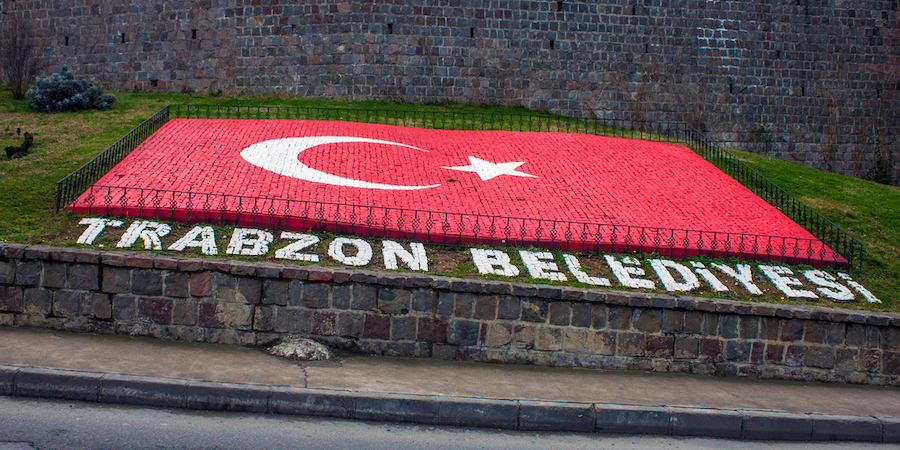
About Trabzon in Turkey
Playing Pivotal Roles in the Black Sea throughout History
The city was initially called Trapezus, and founded by Pontic Greek settlers in the 8th century BC. The Northeast location on the Black Sea coast of Turkey made Trabzon an essential hub for trade between Anatolia and the Caucasus. But Trabzon city reached its zenith during the Byzantine Empire.
Then in 1204, it became the capital of the Empire of Trebizond, a breakaway state from the Byzantine Empire. Trebizond flourished in art, culture, and commerce because the black sea location also made connecting the East and West on the ancient Silk Road crucial. This trade route allowed Trabzon to thrive economically, with goods from as far as China passing through its markets.
In the 15th century, Trabzon fell under Ottoman rule. During this time, it continued to be a key port for trade and a melting pot of cultures. Ottoman Sultan Mehmed II, also called Mehmed the Conqueror, was born in Trabzon, Turkey. He was born in Trabzon Castle on March 30, 1432, and then belonged to the Eastern Roman Empire (Byzantine Empire).
Sultan Mehmed II is famous for his Ottoman conquest of Constantinople (modern-day Istanbul) in 1453, which marked the end of Byzantine rule and the beginning of Ottoman dominance. His birthplace in Trabzon reflects his early life before he became a renowned Ottoman ruler.
Russian Occupation and Influence on Trabzon
The Russian occupation of Trabzon after World War I is significant in Turkish history. During World War I, the Ottoman Empire faced Allied forces on multiple fronts, including the Eastern Front. Trabzon, strategically located on the Black Sea coast, was a target of interest for various powers seeking to secure their positions.
The Russian Empire launched an offensive in 1916, which included the capture of Trabzon in April of that year. During this time, Trabzon City witnessed significant administrative changes, with Russian authorities overseeing various aspects of daily life.
The 1917 Russian Revolution and subsequent turmoil significantly impacted their presence in Trabzon. The Russian forces eventually withdrew from Trabzon City in 1918, partly due to deteriorating conditions at home and shifting alliances during World War I. Although relatively brief, the Russian occupation of Trabzon left a lasting impact.
In the Old Quarter, one can see houses and buildings with Russian architecture. Additionally, while the Soviet Union was still running the show, Russians used to come across the border to Trabzon for what is known as suitcase tourism. They flocked on day trips to buy items like chocolate and leather that were a lot cheaper.
4th Century Sumela Monastery
Trabzon has many attractions that can be seen over a week’s holiday or frequently visited if you own property there. The most talked about is the amazing Sumela Monastery. Some 4,000 feet above the Altindere valley in the Pontiac Mountain range, this stunning, former Greek Orthodox monastery has become a significant tourist destination for its spectacular views and cultural significance. Legend says the Sumela monastery was created by two monks following the discovery of a Black Madonna - a latter-day statue of the Virgin Mary - believed to have been painted by the Apostle Luke.
The monastery reflected worship, contemplation, and scholarship for generations of monks. Even during Ottoman rule, the monks were allowed to continue with their preaching. Sumela Monastery was abandoned in 1923 due to Greek and Turkish population exchanges, with the Black Madonna allegedly being spirited away. But has been restored and, these days, is the top tourist attraction of Trabzon.
Within Sumela monastery are living quarters and a church with impressive Biblical frescoes. The monastery's architectural style blends seamlessly with the natural surroundings. The buildings, carved into rock faces, feature intricate frescoes, chapels, and a stunning main church. Despite centuries of exposure to elements, the delicate artwork retains much of its original vibrancy. One remarkable aspect of Sumela is the destination. The monastery, nestled into the cliffs of Altindere National Park, offers breathtaking views of the forested landscape and the Altindere River below.
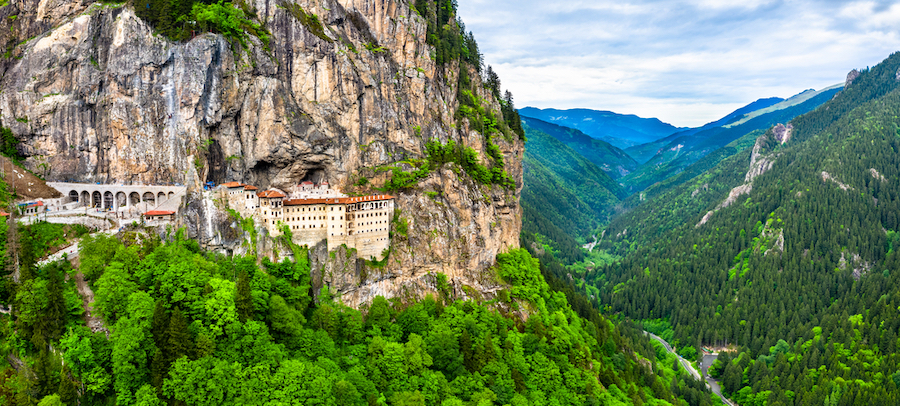
Ataturk House and Pavilion
The 19th-century Atatürk House in Trabzon, also called Atatürk Köşkü (Atatürk Pavilion), holds great significance in Turkey's modern history. Originally built for a wealthy local merchant, the house became a favourite residence of Mustafa Kemal Atatürk during his visits to Trabzon. These visits were of great historical significance, as they marked his commitment to promoting modernisation and reform in Turkey's various regions.
In honour of Mustafa Kemal's connection, the house was transformed into a museum and meticulously preserved. The rooms are set up to recreate the atmosphere of Atatürk's visits, complete with personal items, furniture, and memorabilia from that era.
The architectural style reflects Ottoman-era wooden mansions, showcasing intricate craftsmanship. Surrounding gardens also make the pavilion a relaxing place to explore. Atatürk House in Trabzon highlights the deep respect and admiration that the Turkish people hold for Mustafa Kemal Atatürk, whose leadership and vision continue to shape the nation.
Hagia Sophia Museum and Clock Tower
This 13th-century Byzantine church was converted into a mosque, then a museum, then back into a mosque. Not to be confused with the Hagia Sophia in Istanbul, this building is much smaller but still worth visiting.
Breathtaking views from Boztepe Park
A small example of Trabzon's natural beauty, this little park gives panoramic views. Located three kilometres from the centre, Boztepe is home to four sacred fountains, including the Dragon Fountain, where the legend is that Alexios II of Trebizond slain a dragon.
Uzungol Lake and the Beauty of the Black Sea
The large lake and its surrounding forested valley remain a favoured but natural tourist attraction, 100 kilometres away from Trabzon city centre. The lake lies within the Caykara district and is famed for its natural beauty, set among the enveloping mountain forests. Either a day trip or an overnight stay will leave you thoroughly enchanted.
Experience the Regional Black Sea Cuisine
The renowned regional cuisine is hamsi or anchovies. Hamsi accompanies rice or bread and is even made with baklava. For the adventurous, why not try Muhlama fondue made from cheese, butter, and cornmeal. Equally, you'll be hard-pressed not to accept a hazelnut (findik) or two, as 99 per cent of Turkey's production emanates from the Trabzon region. In the town centre, there are many restaurants, and it is worth checking all their menus. Otherwise, when out and about on your travels, stop by the roadside mountain restaurants to experience authentic Trabzon cuisine.
Adventures at Trabzon Castle and City Walls: Guardians of History
Trabzon Castle, also called Trabzon Kalesi or the Trapezuntine Castle, dates from the Hellenistic period. The rocky promontory location overlooking the Black Sea made the castle an ideal defensive stronghold throughout history. Initially built by the Byzantines, it was pivotal in protecting Trabzon city centre from various invaders.
The castle boasts varied architectural styles influenced by the Byzantine, Genoese, and Ottoman periods. Its imposing walls and strategically placed towers reflect its military significance. Inside, you can explore the remains of churches, cisterns, and living quarters.
Lastly, Visit the Trabzon City Centre
Trabzon city centre has many other attractions, including shopping along Uzun Sokak; the bazaar district in narrow alleyways around the city centre square; and four local mosques, such as Fatih Mosque and Iskender Pasha Mosque. Those who love football can check out the imposing Trabzonspor Akyazi Arena, home of the town's leading football team.
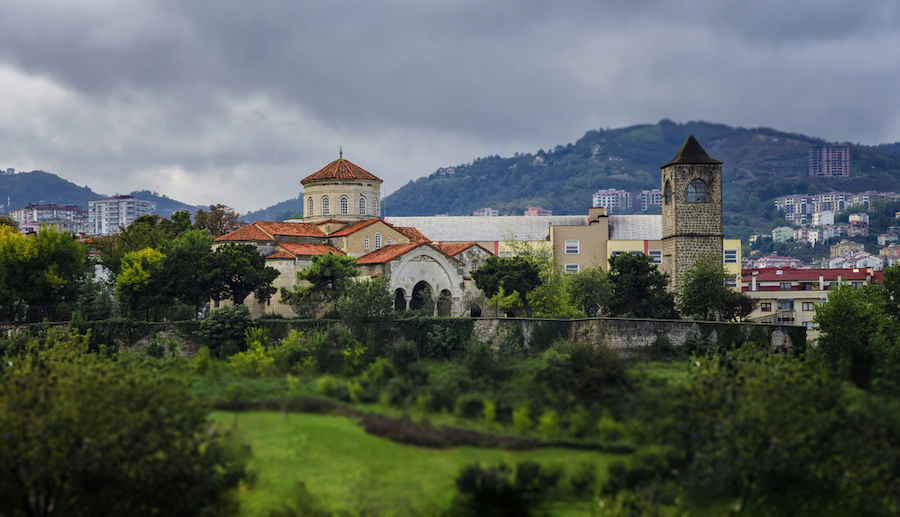
Does Trabzon Have Beaches?
Trabzon is a coastal region fronting the Black Sea, so there are beaches. However, most are stony. The geography here vastly differs from the Mediterranean and Aegean regions of Turkey. Most tourists visit for the cultural and historical significance rather than beach tourism.
From Trabzon to Rize city
Rize city centre sits right next door to Trabzon, and if you have time, it's worth taking the bus or the short drive to explore the delights of this equally grand city. Rize is renowned for its breathtaking landscape cocooned between steep, forested mountains and the Black Sea. The region's unique microclimate, characterised by abundant rainfall, births emerald green hillsides.
Rize is also the "tea capital" of Turkey. The hillsides are adorned with terraced tea plantations, where the world-famous Rize tea is cultivated. You can explore these verdant plantations, witness the tea-picking process, and savour freshly brewed tea. The province is home to diverse populations, including Laz and Hemsin communities, each contributing to Rize's culture.
Overlooking the city, Rize Castle stands as a historical landmark. Though now in ruins, it provides panoramic views, making it popular for visitors seeking history and beauty. Nature enthusiasts will find the Ayder Plateau unique. Situated amidst lush forests, this plateau offers hiking trails, hot springs, and opportunities for relaxation in nature's embrace.
More About Turkey's Black Sea Region
Turkey's Black Sea region, also called Karadeniz in Turkish, is known for its cultural richness and unique charm. The area is also home to the Pontic Mountains, which extend along the coast and provide stunning landscape backdrops. These mountains offer hiking and trekking opportunities and options for winter sports in some areas.
Fishing is vital in Black Sea coastal areas. The Black Sea is known for diverse fish species, and seafood plays significant roles in local cuisines. The Black Sea region of Turkey offers natural beauty, cultural diversity, and historical richness. Whether exploring its stunning landscapes, savouring its culinary delights, or immersing yourself in its vibrant traditions, this region has something to offer every traveller. Find out more.
More About Turkey
If you want to property abroad and think Turkey could be an ideal destination, contact us today and chat with an agent. We are available to answer questions and showcase various homes throughout various areas. Alternatively, see our portfolio of homes for sale here and use the contact details to learn more. You might also like to read our blog that talks about nine other prominent cities in Turkey.
